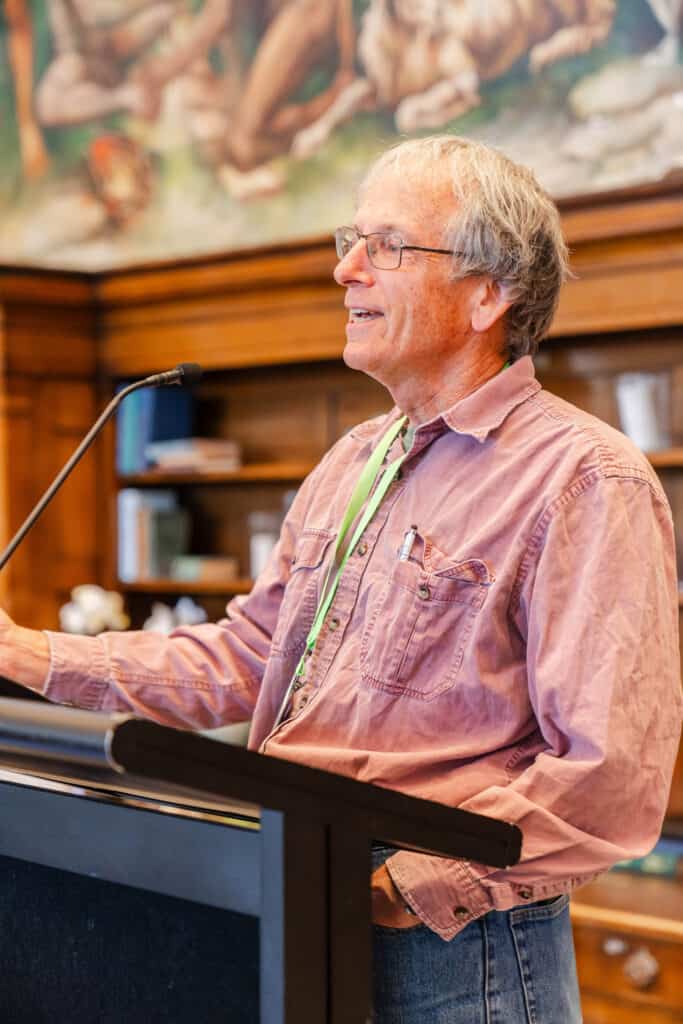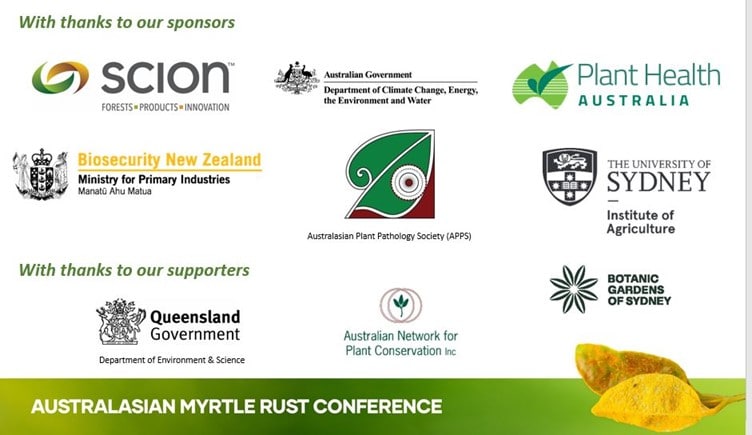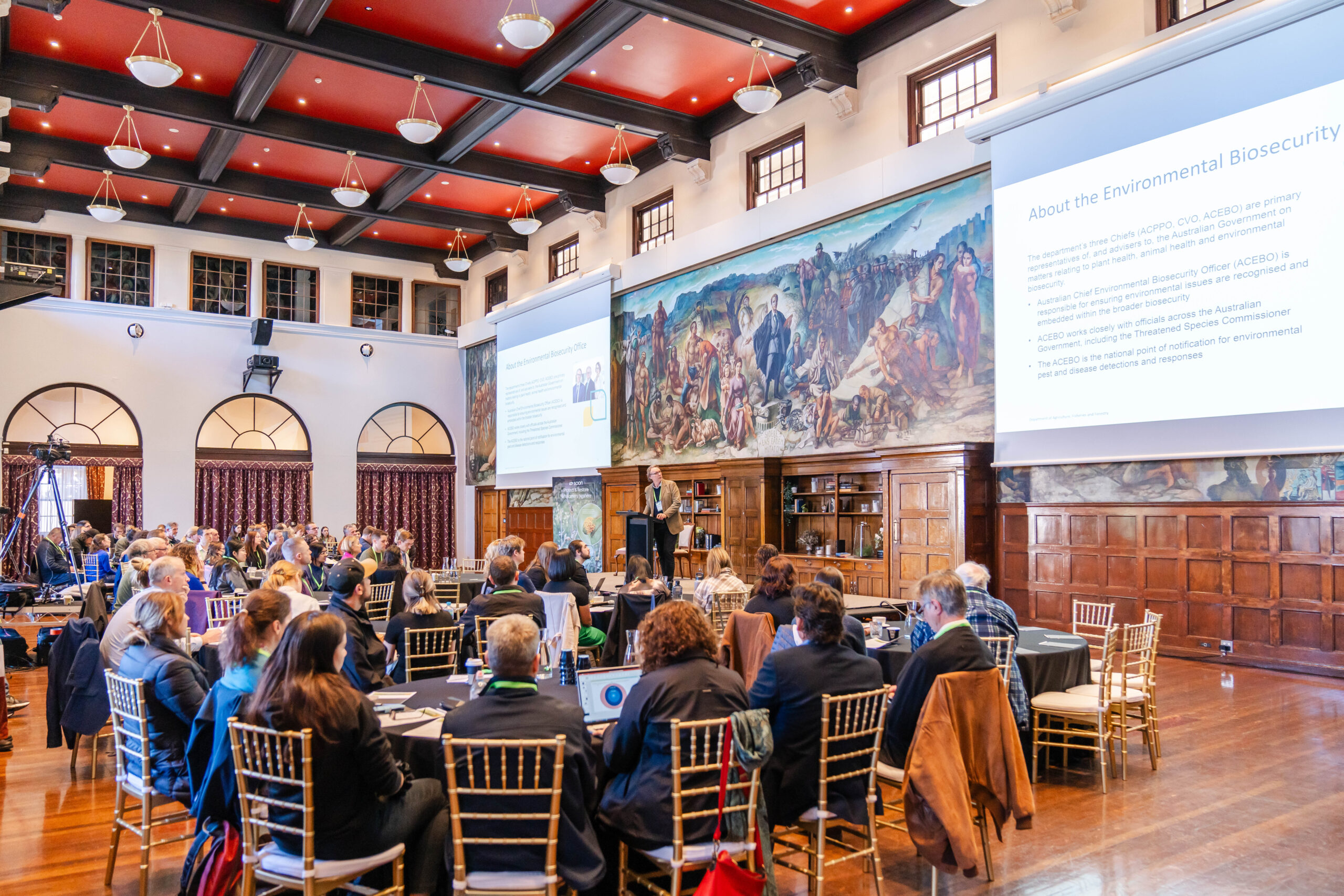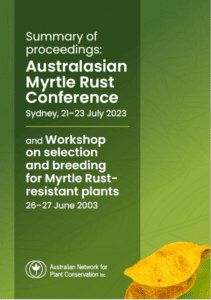Recordings of all Conference presentations are available on the ANPC YouTube channel

Myrtle Rust threatens an estimated 350 Australian plants, killing new growth, buds and flowers, meaning severely impacted species can no longer reproduce. Worst affected species will disappear from the wild. Myrtle Rust is having such a devastating impact on some native plants, that scientists, community groups and First Nations groups in Australia and New Zealand are working together to devise an Australasian response. In June 2023 over 100 experts from around the globe met in Sydney to share knowledge in the inaugural Australasian Myrtle Rust Conference, supported by the Australian Network for Plant Conservation.
Download the Summary of Proceedings of the Australasian Myrtle Rust Conference here [PDF link]
Attendees were buoyed by the breadth of work and dedication to preventing Myrtle Rust extinctions. They were simultaneously unanimous in the sentiment that stronger leadership, greater coordination, and long-term funding were the crucial missing elements. Priority next steps include improved sharing of resources and of research and its outcomes, and refining priority species and actions for conservation efforts to maximise the involvement of researchers, communities and land managers.
Several key themes emerged from the 50 presentations given during the conference, giving rise to potential simultaneous directions to tackle Myrtle Rust incursions and extinctions:
- Status of Myrtle Rust in Aotearoa (New Zealand) (Beccy Ganley and Roanne Sutherland) and Australia (Geoff Pegg and Bob Makinson), including current ex situ holdings (Bradley Desmond)
- Understanding host:pathogen interactions (Peri Tobias) and well as genetic lineages and spread (Thais Boufleur)
- Resistance breeding program using examples from the white pine blister rust programs (Richard Sniezko) and genomics informed programs (Heidi Dungey)
- First Nations response for Taonga (Alby Marsh) impacted by Myrtle Rust and in QLD and NSW (Tilly Davis and AJ Perkins )
- Ex situ conservation methods such as specialised seed banking (Karen Sommerville), cryopreservation and tissue culture (Lyndle Hardstaff), as well as dispersed collections (Amelia Martyn-Yenson) of emergency species (Craig Stehn)
- Genetics for planning conservation collections including identification of genetic diversity of impacted species (Stephanie Chen)
- Resistance identification and screening using biomarkers (Michelle Moffit) and genomics to optimise ex situ holdings for reintroduction and resistance (Jason Bragg)
- Emerging detection options including remote rust spore detection (Benjamin Schwessinger) and thermal imaging (Michael Bartlett)
- Predictive modelling of refugia (James McCarthy)
- Local management actions to eradicate (Cristina Venables and Nicola Fuller Lord Howe Island) and contain (Mia Townsend Western Australia)
- Pre and post infection treatments such as dRNA foliar treatment (Rebecca Degnan)

International guest speaker Dr Richard Sniezko from the US Department of Agriculture Forest Service, presenting on developing disease resistance tree populations for restoration. Credit: Dan Turner



